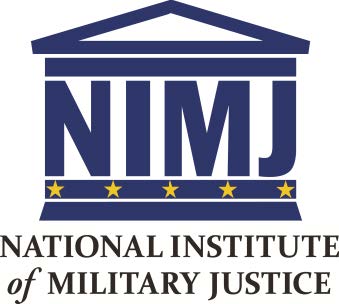We commend COL Douglas Simon’s, Making the UCMJ More Uniform, The Army Lawyer, No. 3, 2021, to the reader.
One goal of reforming state military justice systems is to establish consistency, uniformity, and some degree of alignment with the UCMJ. However, a primary barrier to fully achieving this goal is the current effort to modernize state military justice systems on a state-by-state basis. This is problematic because the fifty-four state and territorial jurisdictions that make up the National Guard have different levels of expertise, motives, and resources to support or adopt a uniform system, either in whole or in part. The divergence of state interests leads to non-uniformity that exposes important questions for states to consider. For instance, and to highlight a few notable and known areas: 1) what is the scope of jurisdiction over National Guard Service members;44 2) what is the applicability of the Military Rules of Evidence (MRE); 3) what is the applicability of the Rules for Courts-Martial (RCM); and 4) what appellate courts and procedures (military or civilian) will apply? With state appellate courts, will they defer to military precedent when it may conflict with the respective state law or constitution? These important questions fueled the creation of a Military Justice Survey to assess the variability with the states’ military justice systems and, equally important, to understand the pace of progress with the adoption of the Model State Code that became available in 2005.
One goal of reforming state military justice systems is to establish consistency, uniformity, and some degree of alignment with the UCMJ. However, a primary barrier to fully achieving this goal is the current effort to modernize state military justice systems on a state-by-state basis. This is problematic because the fifty-four state and territorial jurisdictions that make up the National Guard have different levels of expertise, motives, and resources to support or adopt a uniform system, either in whole or in part. The divergence of state interests leads to non-uniformity that exposes important questions for states to consider. For instance, and to highlight a few notable and known areas: 1) what is the scope of jurisdiction over National Guard Service members;44 2) what is the applicability of the Military Rules of Evidence (MRE); 3) what is the applicability of the Rules for Courts-Martial (RCM); and 4) what appellate courts and procedures (military or civilian) will apply? With state appellate courts, will they defer to military precedent when it may conflict with the respective state law or constitution? These important questions fueled the creation of a Military Justice Survey to assess the variability with the states’ military justice systems and, equally important, to understand the pace of progress with the adoption of the Model State Code that became available in 2005.
Prof. Frank Rosenblatt has a short piece at GMJR about state codes that do or do not follow the federal UCMJ, specifically referencing the use of Article 15, UCMJ.
Please note that much has changed in the UCMJ over the last few years. But it appears the state National Guard has yet to fully catch up. Please let us know if our links here are outdated because of recent legislative changes.
Of current note is Dennis Wagner, National Guard scandals in these 13 states raise questions about culture and accountability. USA Today, 28 November 2021. Some specific issues are noted below by state.
Here is a link to the various National Guard websites.
Let us know if there is something to add.
Here is a link to the various National Guard websites.
Let us know if there is something to add.
|
Alabama
[Apr. 2024] The Alabama Senate has passed a bill amending the state's Code of Military Justice. Among other things, the bill amends the provision on subject matter jurisdiction. There will be a rebuttable presumption that a member in any duty status will have the requisite service nexus. The measure goes to the State House of Representatives. Alaska Arizona Arkansas California Colorado Connecticut Delaware Florida Georgia Hawaii Idaho Illinois Indiana Some new changes as of 2023. Kansas (2024) SENATE BILL No. 292 (2024) CONFERENCE COMMITTEE REPORT BRIEF SENATE BILL 292 Kentucky Louisiana |
Ohio
Oklahoma Oregon Pennsylvania Rhode Island South Carolina South Dakota Tennessee Texas Utah Vermont Virginia Washington West Virginia Wisconsin GMJR reports further developments in Wisconsin and changes to its state code on military justice matters. The summary is here. Wyoming |
Puerto Rico
Guam
U. S. Virgin Islands
American Samoa (not available)*
Northern Mariana Islands (not available)*
The Northern Mariana Islands and American Samoa are the only permanently inhabited U.S. territories that do not have a National Guard unit.
Guam
U. S. Virgin Islands
American Samoa (not available)*
Northern Mariana Islands (not available)*
The Northern Mariana Islands and American Samoa are the only permanently inhabited U.S. territories that do not have a National Guard unit.
The Posse Comitatus Act and the National Guard.
* We might expect, that as reform continues of the U.S. Uniform Code of Military Justice, that the states will in some way follow suit. For example, N. Dakota merely refers you to the UCMJ and RCM of 2010.
Guard in the News
The National Guard is eyeing expansion of its program to train and strengthen relationships with allied countries, an initiative that Pentagon planners hail as a key foreign policy tool. Steve Baynon, National Guard Looking to Expand Partnership Program with Key Allies. Military.com, 19 July 2024.
Proudly powered by Weebly
